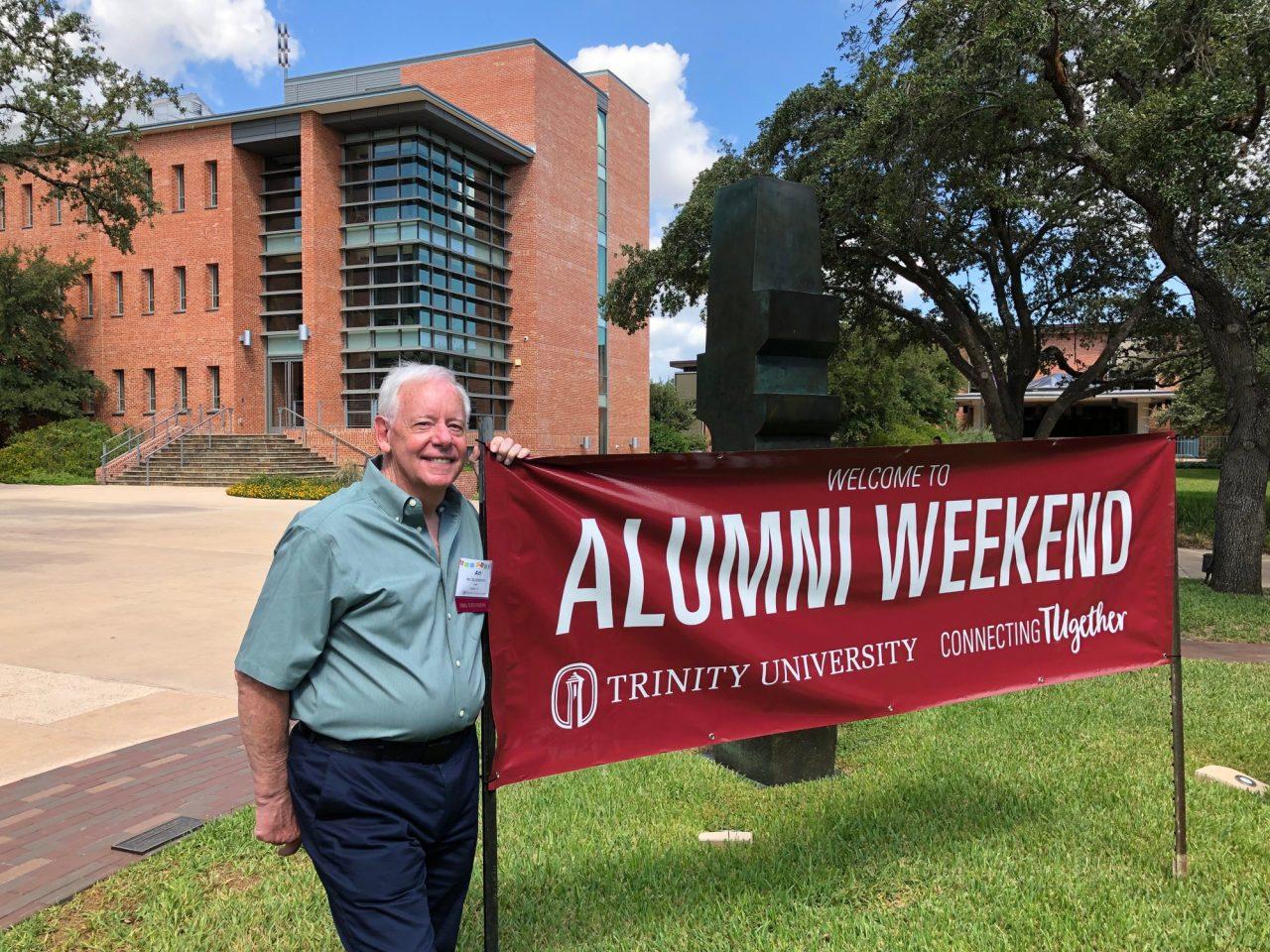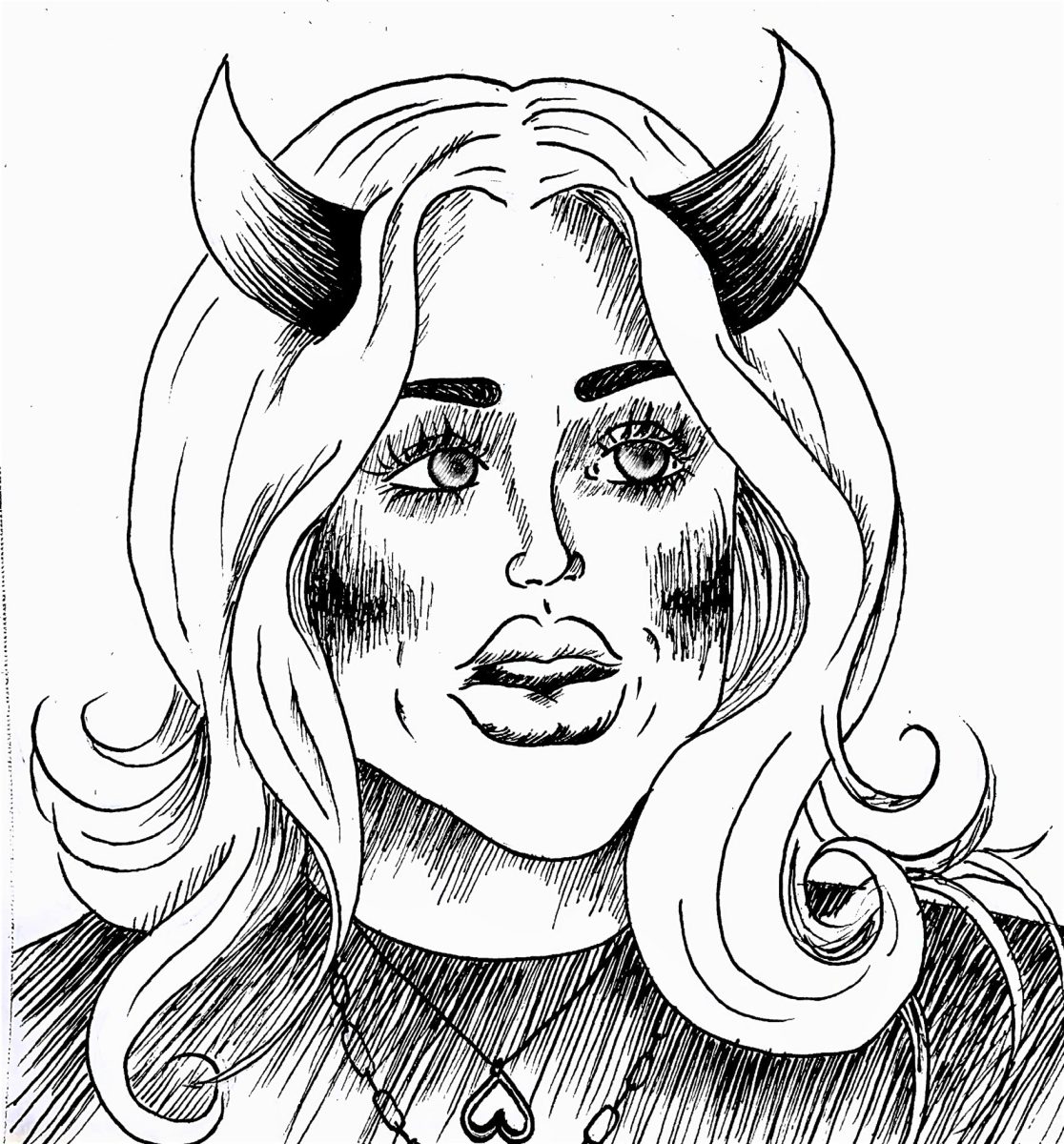On campus to celebrate Trinity’s 150th Anniversary and to attend his 50th class reunion, Art Sundstrom reflected on the differences and similarities between 1969 and 2019. As president of the Student Association during the 1968–1969 academic year, Sundstrom was deeply involved in organizing and promoting centennial celebrations. A photograph showing President James W. Laurie and Sundstrom holding a centennial flag marking the beginning of year-long centennial events appeared in local newspapers. For the featured homecoming celebration, Sundstrom arranged to have candidates for homecoming king and queen wear attire from the Tehuacana, Waxahachie, Woodlawn and Trinity Hill eras. He included a candidate enclosed in a space suit to suggest what future dress might look like. The event attracted local TV coverage and boosted wider community interest in the ongoing celebrations.
But celebrations were not what Sundstrom considered to be the most important events of the centennial year. The Vietnam War evoked student protests on campuses throughout the country, fueled by grim television coverage of military engagements and loss of life. Trinity was an exception.
“We lived in what we called the Trinity Bubble, where most students went on with their lives as though nothing much was happening in the outside world,” Sundstrom said.
Donald Everett, professor of history, commented at the time: “Mainly at Trinity the protest has been that there has been no protest.”
While the campus lacked contentious anti-war protests, Trinity students generated activism in other areas of student life. They resisted the traditional paternalism and in loco parentis attitudes of school administrators that severely limited opportunities to be involved in decisions affecting social and academic life. Sundstrom played a major role in organizing Trinity students to address these concerns. One of his first initiatives was to secure administrative consent to establish reading days prior to final examinations, common today, but an innovation in 1969.
On a more expansive scale, Sundstrom utilized his position as student body president as leverage to rally a movement to attain a formal agreement with the administration regarding the rights and freedoms of students on the Trinity campus. Enlisting student, faculty and administrative support, Sundstrom spearheaded a process that resulted in lengthy conversations about the rights and responsibilities of students and administrators. The final product, The Joint Statement of Rights and Freedoms of Students, was approved by the Board of Trustees. The document covered areas such as classroom conditions, student records, student social life, student publications, disciplinary proceedings and membership on university committees. It also established procedures to implement the principles of the Joint Statement and make them available to students in the Student Handbook. Overarching the specifications of rights and freedoms was a proviso that “students should exercise their freedom with responsibility.”
Trinity’s accomplishment received national recognition as other colleges and universities used it as a model statement in their efforts to promote student rights. Present day Trinity students often take for granted the rights and freedoms that they enjoy, but prior to 1969 there were no written assurances that such existed. Looking back, Sundstrom considers the efforts of his student generation to be the most memorable event of Trinity’s Centennial celebration and he is grateful that today’s students are making the most of opportunities that are available to them.
On the lighter side, Sundstrom thought today’s campus retained the unifying atmosphere created by architect O’Neil Ford even with the addition of new buildings. The only exceptions were the new Northrup Hall that replaced the modest two-story building of his campus days, and the disappearance of a main campus entrance featuring the sparkling Miller Fountain. In evidence, however, was the personal touch of the “Trinity family” that he and spouse, Sara Murphy Sundstrom, experienced as undergraduates. They felt welcomed by students, faculty, staff and administrators and enjoyed the varied events of Alumni Weekend.
When asked to summarize his evaluation of Trinity at its 150th anniversary, Sundstrom smiled and said, “The best thing I can say about Trinity is that I am trying to get my two grand-daughters to come here.” If he succeeds, they can enjoy the rights and freedoms secured largely through the efforts of their grandfather and his Trinity associates.






